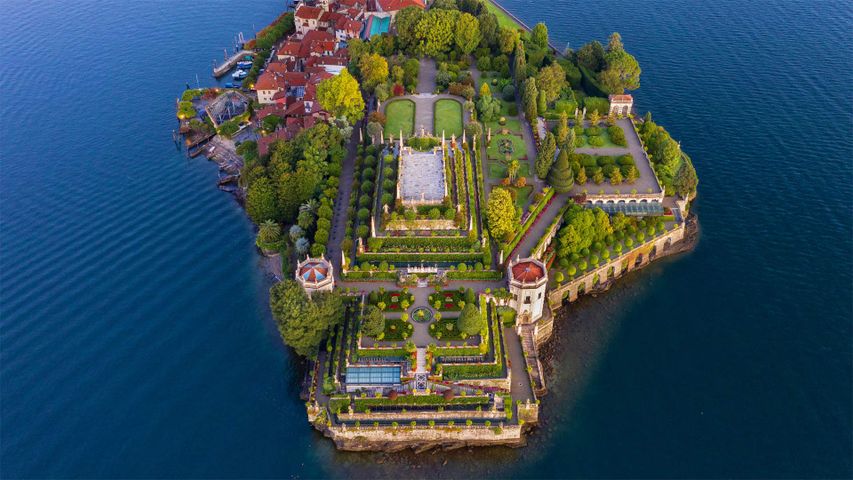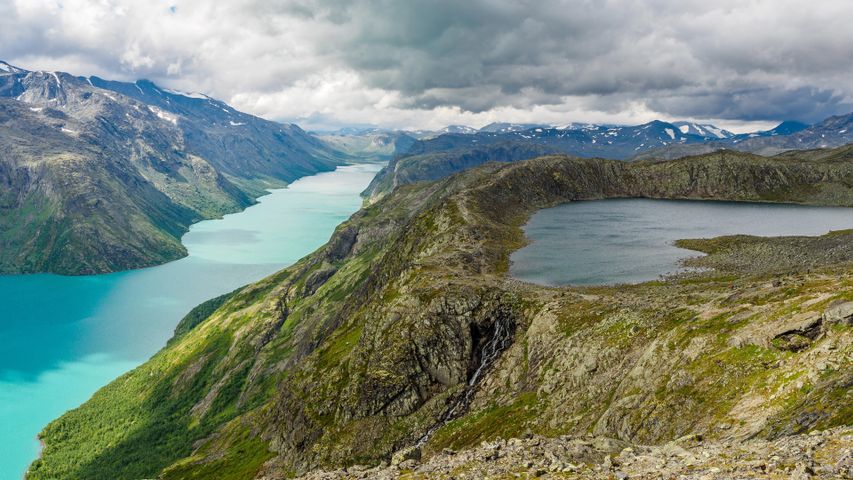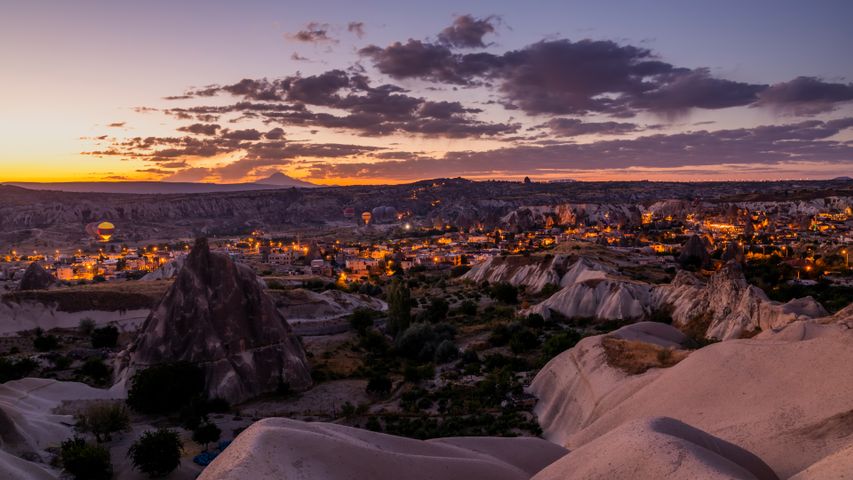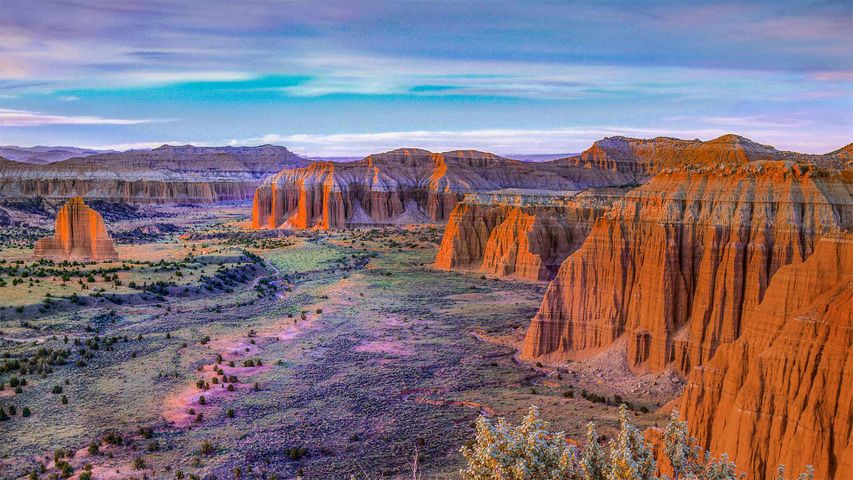The Hickman Bridge at Capitol Reef National Park, Utah
© Tim Fitzharris/Minden Picture
Take the trail more traveled by. Happy birthday, Capitol Reef National Park
You won't find a lot of solitude on the Hickman Bridge Trail, a 1.7-mile route in Capitol Reef National Park that leads to this magnificent natural arch. The trail is used by hikers, runners, and nature lovers drawn by incredible rock formations, gullies, and remnants from the ancient Fremont Culture civilization. Hickman Bridge itself is one of the best-known geologic features of the park.
Capitol Reef National Park was first established as a national monument on this day in 1937, then became a national park in 1971. Capitol Reef is named for its massive rock domes that reminded nearby residents of that famous rotunda of the US Capitol Building back in Washington, DC. Why Capitol 'Reef,' though? Because the imposing formations were major obstacles to travelers through the region, the same way a coral reef is an obstacle to sailors.
The geology of the park is defined by the nearly 100-mile Waterpocket Fold, a wrinkle in the Earth's crust that formed around the end of the dinosaur era. Wind, rain, and time have eroded the Navajo Sandstone into colorful canyons, buttes, and natural arches like Hickman Bridge. The dramatic rock formations make Capitol Reef a favorite destination in the American West.
Related Images
Bing Today Images




 Seceda, a peak in the Dolomites, South Tyrol, Italy
Seceda, a peak in the Dolomites, South Tyrol, Italy
 Delicate Arch, Arches National Park, Utah
Delicate Arch, Arches National Park, Utah
 Chisos Mountains, Big Bend National Park, Texas
Chisos Mountains, Big Bend National Park, Texas
 Summit of Pine Mountain, Angeles National Forest, California
Summit of Pine Mountain, Angeles National Forest, California
 Jotunheimen National Park in Norway
Jotunheimen National Park in Norway
 Zion National Park, Utah
Zion National Park, Utah
 Hot air balloons over Göreme Historical National Park in Cappadocia, Türkiye
Hot air balloons over Göreme Historical National Park in Cappadocia, Türkiye
 Kachina Bridge, Natural Bridges National Monument, Utah
Kachina Bridge, Natural Bridges National Monument, Utah

